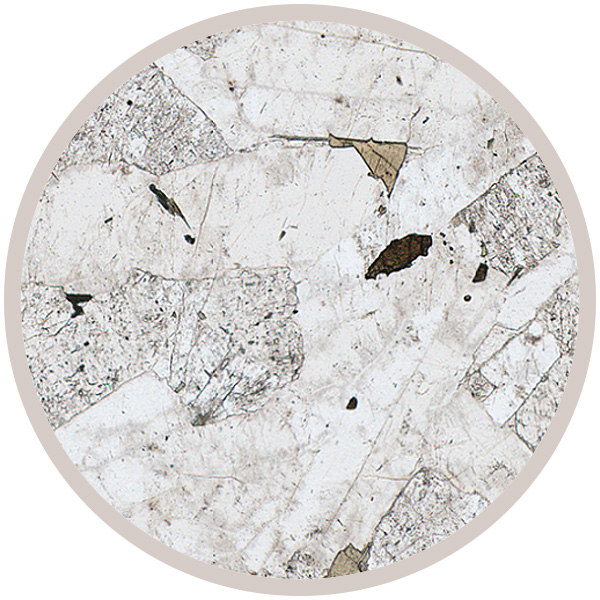
Fact sheet
This Nepheline Syenite sample comes from East of Ledbeg, Sutherland, Scotland, and is part of the Borralan intrusion which lies in the SW corner of the Assynt region bordered by the Moine Thrust zone. This intrusive complex is the only plutonic complex composed largely of silica-undersaturated (i.e. feldspathoid-bearing) igneous rocks in the British Isles. Several members of the Borralan suite of intrusion are exceptionally alkaline. It provides Britain's only example of truly ultra-potassic magmatism.
In thin section this rock contains orthoclase feldspar laths which exhibit simple twinning, slightly higher relief and dusty grains of nepheline, phlogopite mica which is pleochroic in dark brown to straw yellow, and rare melanite garnet.
The United Kingdom Virtual Microscope (UKVM) collection consists of igneous, sedimentary and metamorphic rocks from around the UK.
It is intended as a teaching resource, helping to tell the story of the common rock types and how they form, and reflecting the history of the UK at the margins of the continent of Europe. The collection is a series of teaching sets, for example igneous rocks from the North Atlantic Igneous Province and SW England; high-temperature metamorphic rocks from Scotland and low-temperature metamorphic rocks from Wales; and sedimentary rocks, including English limestones and sandstones.






